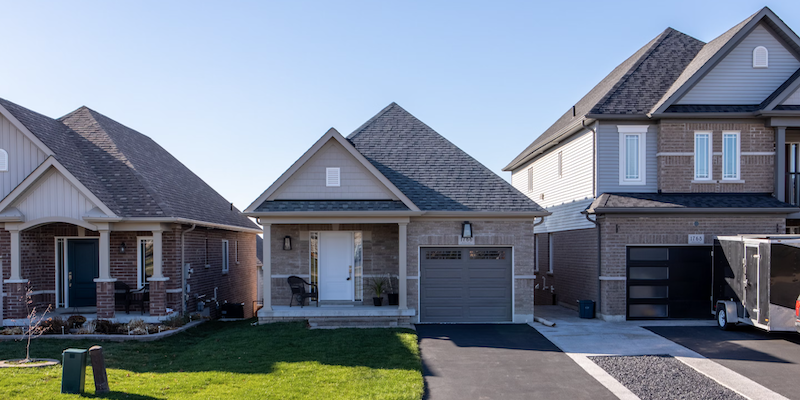As the real estate landscape evolves, 2025 is shaping up to be a year of innovation, adaptation, and opportunity. Whether you’re a buyer, seller, or investor, staying ahead of these trends can give you a significant edge in navigating the market.

1. The Rise of Smart Neighborhoods
Gone are the days of single smart homes; 2025 sees the emergence of entire smart neighborhoods. These communities are designed with interconnected smart devices, including streetlights, security systems, and energy-efficient utilities. The integration of IoT (Internet of Things) in residential planning is attracting tech-savvy buyers who prioritize convenience and sustainability.
Why it matters:
- Enhanced safety with advanced surveillance systems.
- Lower utility costs due to optimized energy use.
- Appeal to younger generations seeking tech-driven solutions.
2. Sustainability as a Standard
Sustainability is no longer a luxury—it’s a necessity. Green certifications, solar-powered homes, and water conservation systems are becoming standard features in new developments. Governments and private organizations are incentivizing eco-friendly construction with tax breaks and grants, making sustainable properties more accessible.
Key takeaway:
- Buyers are prioritizing homes with a reduced carbon footprint.
- Investors are drawn to properties that promise long-term cost savings and compliance with evolving regulations.
3. Flexible Living Spaces
The pandemic permanently altered how we think about living spaces. In 2025, flexibility remains a priority. Homes now feature adaptable rooms that can transform from offices to guest rooms to workout spaces. Modular furniture and movable walls are also gaining popularity.
Market insight:
- Multifunctional spaces cater to remote work trends and growing families.
- Properties with versatile layouts are fetching higher prices.
4. Suburban Renaissance
As remote work continues to thrive, suburban areas are experiencing renewed interest. With lower costs and larger properties, suburbs offer an attractive alternative to urban living. Developers are responding with modern amenities in suburban settings, including co-working spaces, boutique shopping, and gourmet dining options.
Why this trend stands out:
- Suburbs are becoming hubs of activity, blending urban conveniences with rural tranquility.
- Investors are capitalizing on rising demand for suburban rentals.
5. Co-Living Communities
Co-living spaces are gaining traction among younger generations and retirees alike. These communities emphasize shared living areas and amenities while maintaining private quarters. They’re ideal for individuals seeking affordable housing solutions and a sense of community.
Benefits include:
- Lower living costs.
- Opportunities for social engagement.
- Shared resources like gyms, kitchens, and gardens.
6. AI in Real Estate Transactions
Artificial intelligence is revolutionizing how properties are bought and sold. From virtual property tours to predictive analytics, AI is streamlining processes and enhancing the customer experience. In 2025, expect to see even more AI-powered tools simplifying complex transactions.
Examples of AI’s impact:
- Faster property evaluations using AI algorithms.
- Personalized property recommendations based on user preferences.
- Virtual assistants managing communications and paperwork.
7. Luxury Real Estate Goes Digital
The luxury market is embracing digital transformation. Virtual reality tours, blockchain-based property transactions, and high-tech marketing strategies are making luxury properties more accessible to global buyers.
What this means for buyers and sellers:
- A broader market reach for luxury listings.
- More secure transactions through blockchain technology.
- Enhanced property showcasing through immersive experiences.
8. Affordable Housing Innovations
As housing affordability continues to be a challenge, innovative solutions are emerging. Prefabricated homes, tiny houses, and 3D-printed properties are offering cost-effective alternatives to traditional construction.
Trend highlights:
- Faster construction timelines.
- Reduced material waste.
- Increased accessibility for first-time buyers.
9. Health-Focused Design
Health and wellness are at the forefront of real estate design in 2025. Properties now include features like enhanced air filtration systems, soundproofing, and wellness amenities such as meditation rooms and rooftop gardens.
Why buyers care:
- Greater focus on mental and physical well-being.
- Increased property value through unique features.
10. Data-Driven Decision Making
Big data is transforming real estate strategies. Developers, investors, and agents are leveraging analytics to understand market trends, buyer preferences, and property performance. This data-driven approach ensures more informed decisions and better outcomes for all stakeholders.
How it’s used:
- Identifying high-demand areas for development.
- Customizing marketing strategies for targeted audiences.
- Predicting market shifts to maximize ROI.
Have a property you need to sell? PropertyPal is here to offer you a fair, as-is, cash offer!
